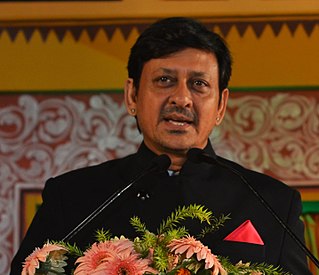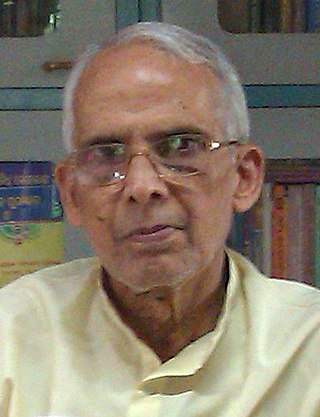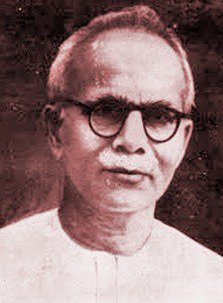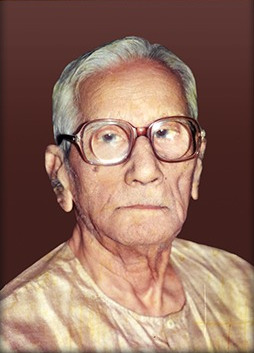Related Research Articles

Odia is an Indo-Aryan classical language spoken in the Indian state of Odisha. It is the official language in Odisha, where native speakers make up 82% of the population, and it is also spoken in parts of West Bengal, Jharkhand, Andhra Pradesh and Chhattisgarh. Odia is one of the many official languages of India; it is the official language of Odisha and the second official language of Jharkhand.

Brahmapur is a city on the eastern coastline of Odisha, India.

Ganjam district is a district in the Indian state of Odisha. Ganjam's total area is 8,206 km² (3,168 mi²). The district headquarters is Chhatrapur. Ganjam is divided into three sub-divisions Chhatrapur, Berhampur, and Bhanjanagar. The Imperial Gazetteer of India 1908 lists Ganjam, along with the Thanjavur and South Canara districts, as the three districts of the Madras Presidency where Brahmins were most numerous. As of 2011 it is the most populous district of Odisha.

Asika or Aska (ଆସିକା)/(ଆସ୍କା) is a town and a Municipality in Ganjam district in the state of Odisha, India. Famously known as the Sugar city.

Bhanjanagar is a town and Municipality in Ganjam district in the state of Odisha, India.

Surada is a town and a Notified Area Council in Ganjam district in the Indian state of Odisha.
Odia literature is literature written in the Odia language, mostly from the Indian state of Odisha. The modern Odia language is mostly formed from Tadbhava words with significant Sanskrit (Tatsama) influences, along with loanwords from Desaja, English, Hindustani (Hindi/Urdu), Persian, and Arabic. Its earliest written texts date from around 1000 CE. The earliest Odia newspaper was Utkala Deepika, first published on August 4, 1866.
Odisha is one of the 28 states of India, located on the eastern coast. It is surrounded by the states of West Bengal to the northeast, Jharkhand to the north, Chhattisgarh to the west and northwest, and Andhra Pradesh to the south and southwest. Odia is the official and most widely spoken language, spoken by 33.2 million according to the 2001 Census. The modern state of Odisha was established on 1 April 1936, as a province in British India, and consisted predominantly of Odia-speaking regions. April 1 is celebrated as Odisha Day.

Sidhant Mohapatra, popularly known as Munna Bhai, is an Indian actor and politician who appears predominantly in Odia cinema. Mohapatra has also won seven Odisha State Film Awards back-to-back, from 2000 to 2006, and a Filmfare Awards East award.

The Rushikulya River is one of the major rivers in the state of Odisha and covers entire catchment area in the districts of Kandhamal and Ganjam of Odisha. The Rushikulya originates at an elevation of about 1000 metres from Rushimala Hills part of Daringbadi hills of the Eastern Ghats range. The place from where the river originates, Daringbadi is called the ' Kashmir of Odisha '. The river lies within the geographical coordinates of 19.07 to 20.19 north latitude and 84.01 to 85.06 east longitude. It meets the Bay of Bengal at Puruna Bandha in Ganjam. Its tributaries are the Baghua, the Dhanei, the Badanadi etc. It has no delta as such at its mouth.

Brajanath Ratha was an Indian poet who wrote in Odia. Brajanath Ratha is internationally recognised and is the recipient of many prestigious awards like the Odisha Sahitya Academy Award, Vishuba Award, Gokarnika Award, First Shudramuni Sahitya Award and Honoured by South Korea's Ambassador, from Global Cooperation Society International, Seol, Republic of Korea for Contribution in World welfare, Cooperation and Services.

Pandit Godabarish Mishra was a poet and notable socialist from Odisha, India. He is known for his contribution to Odia literature.

Dr. Radhanath Rath was a newspaper editor, freedom fighter, social worker and politician from Odisha. He was the editor of The Samaja, one of the leading newspapers of Odisha.
Berhampur is a Vidhan Sabha constituency of Ganjam district. Area of this constituency includes ward no. 1 to ward no. 24 of Brahmapur Municipal Corporation.

Soroda Estate present day Sorada or Surada, was a zamindari in the North-Western side of Ganjam district of Odisha, India.
Kulada is a small village located near Bhanjanagar of Ganjam district in Odisha. It is located 108 km towards North from District Headquarters Chhatrapur. 159 km from State capital Bhubaneswar. Asika, Hinjilicut, Phulabani, Berhampur are the nearby Cities to Kulada. Odia is the native Language here.
Baunsalundi is a small village in Gram Panchayat Baunsalundi located near Bhanjanagar of Ganjam district in Odisha. It is located 91 km towards North from District Headquarters Chhatrapur. 162 km from State capital Bhubaneswar.. Odia is the Language here.
Dihapadhal is a Village located near Bhanjanagar of Ganjam district in Orissa. It is located 104 km towards North from District Headquarters Chhatrapur. 170 km from State capital Bhubaneswar. Bhanjanagar, Lalsingi, Jilundi, Baunsalundi, Inginathi, Sanakodanda are the nearby Villages to Dihapadhal. Odia is the Local Language here.

Khallikote Unitary University, formerly known as Khallikote Autonomous College, is a co-educational state university situated in Brahmapur, Odisha on the eastern coast of India. Founded as Union College in 1878, the institution became a university in 2021. The university has a student enrolment of nearly 5,000. It is one of the oldest educational institutes in Odisha.
References
- ↑ "Unsung Heroes Detail". Amritmahotsav.nic.in. Retrieved 13 February 2023.
- ↑ Orissa Society of Americas 25th Annual Convention Souvenir: For Annual Convention Held in 1994 at Pamona, New Jersey. Odisha Society of the Americas. pp. 22–. GGKEY:497UK5ADFB0.
- ↑ P. K. Jena (1988). Orissa, a New Province: History of Government and Politics in Orissa from 1936-1948. Punthi Pustak.
- ↑ K. S. Singh (1992). People of India: Odisha (2 pts.). Anthropological Survey of India. ISBN 978-81-7046-293-4.
- ↑ "Activists demand new statue of Odisha movement leader in Silk City". Timesofindia.com. 2 January 2023.
The government women's college here was named after him by the government